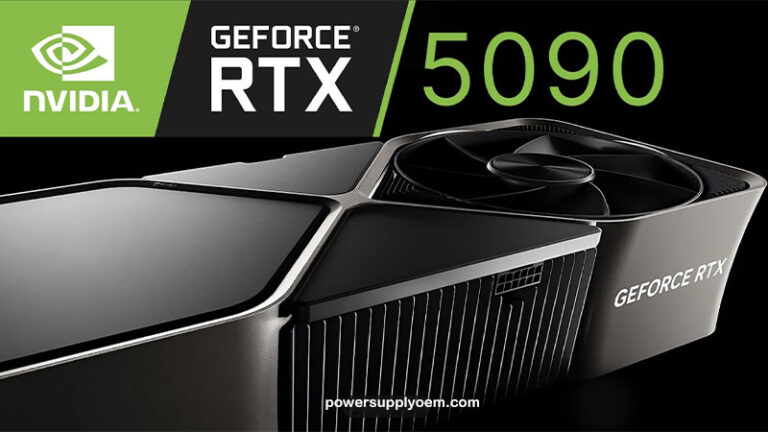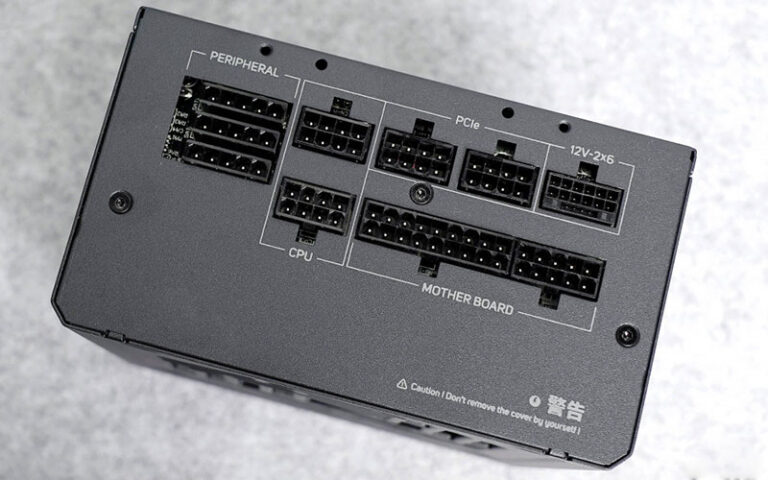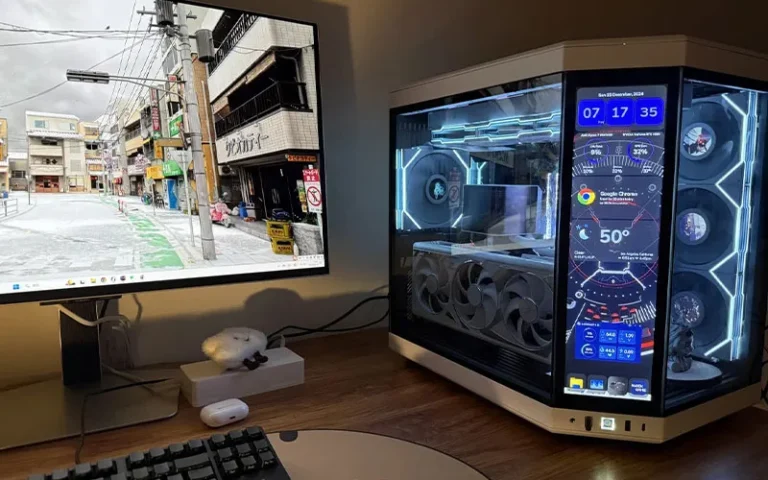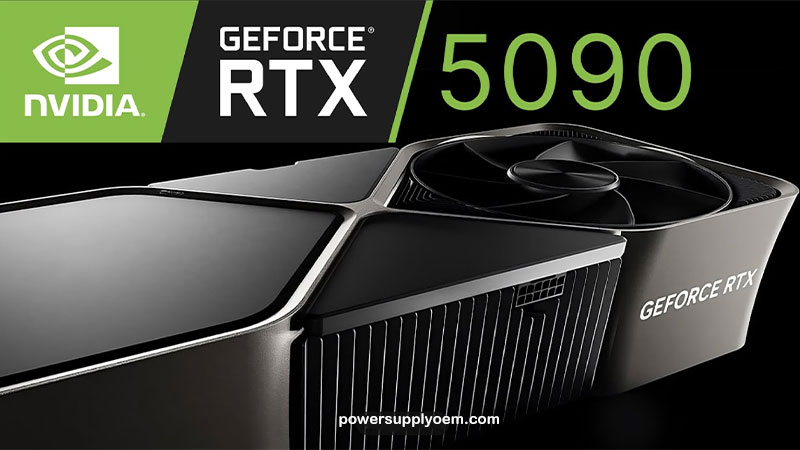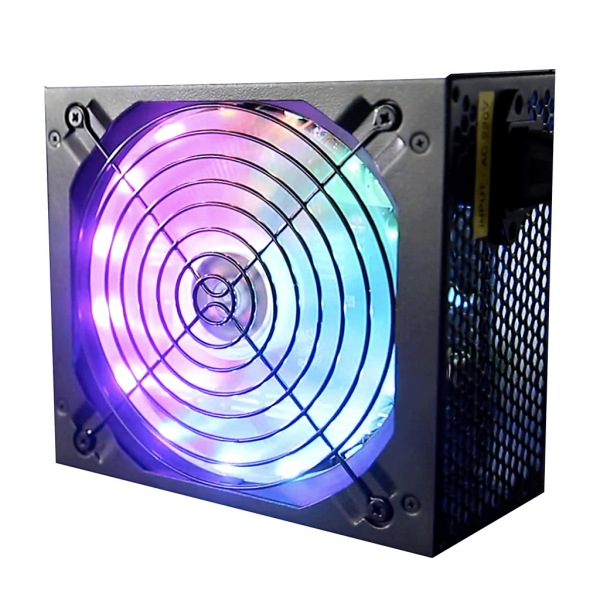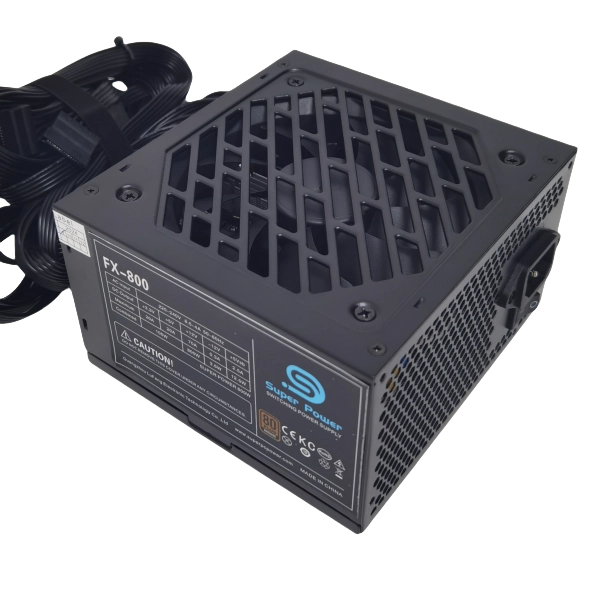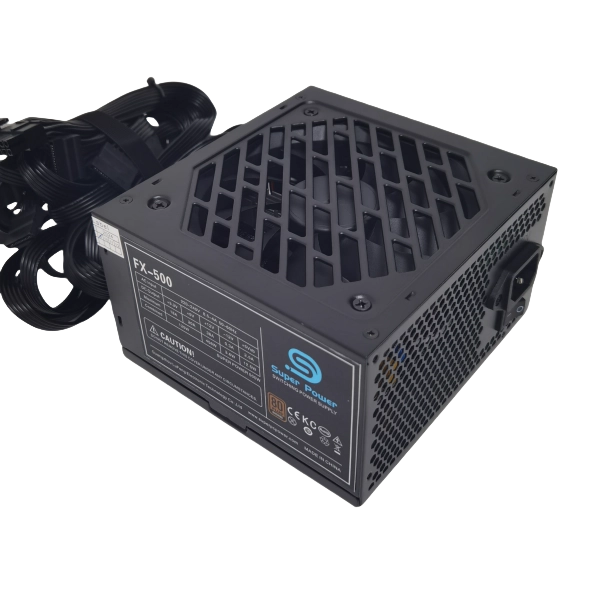-
Building E, No. 65 Xingshan North Road, Liangtian, Baisha Industrial Park, Baiyun District, Guangzhou

How To Install Power Supply In PC
A Comprehensive Guide to Installing a PSU: How to Install a Power Supply in Your Gaming PC
This detailed guide provides step-by-step instructions on how to install Power Supply Unit in your gaming PC or any desktop computer. Whether you’re building a new PC, upgrading to a new PSU, or replacing a faulty one, this guide will walk you through the process, from preparing your PC case to connecting all the necessary PSU cables. Installing a PSU might seem daunting, but with the right knowledge and careful execution, it’s a manageable task for most PC enthusiasts. This guide is essential reading for anyone looking to confidently tackle this crucial aspect of PC building or maintenance and learn how to properly install a power supply.
Table of Contents
1. Why is the PSU Important for Your PC?
The PSU, or power supply unit, is the heart of your PC’s electrical system. It converts the alternating current (AC) power from your wall outlet into the direct current (DC) power that your computer’s internal components require. A reliable PSU is essential for providing stable and consistent power to all your hardware, including the motherboard, CPU, GPU, storage devices (SSDs and hard drives), and other peripherals.
Without a properly functioning PSU, your PC may experience:
- System instability (random shutdowns, freezes, crashes)
- Component damage (due to insufficient or fluctuating power)
- Data loss (due to unexpected shutdowns)
- Reduced lifespan of components
Therefore, choosing and correctly installing a PSU is a crucial step in building or maintaining a healthy and reliable computer.
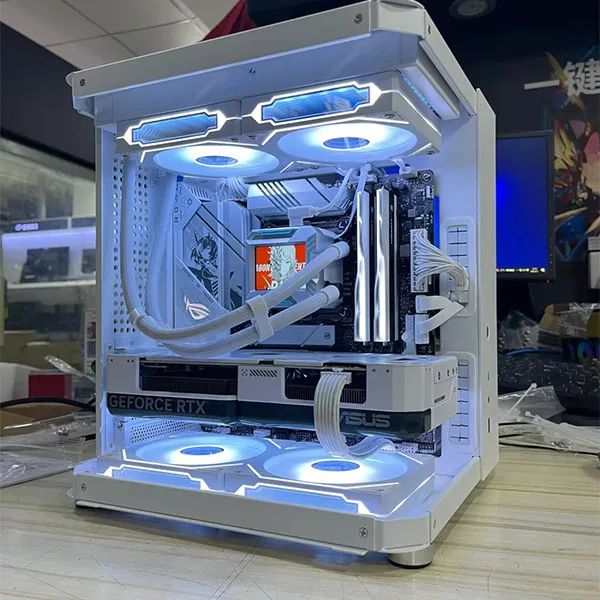
2. Choosing the Right PSU for Your Needs
Before you install a PSU, you need to select the right one for your system. Key considerations include:
- Wattage: Calculate your system’s total power requirements (using an online PSU calculator or by adding up the power consumption of each component) and choose a PSU with sufficient wattage, plus some headroom for future upgrades.
- Form Factor: Ensure the PSU’s form factor (ATX, SFX, etc.) is compatible with your PC case. ATX PSUs are the most common.
- Efficiency Rating: Look for an 80 Plus certified PSU (Bronze, Silver, Gold, Platinum, or Titanium) for better energy efficiency. We are a manufacturer of 80 plus gold PSUs.
- Modularity: Modular PSUs allow you to detach unnecessary cables, improving airflow and cable management. Semi-modular PSU options offer a balance.
- Connectors: Verify that the PSU has all the necessary connectors for your components (24-pin ATX, 8-pin CPU, PCIe for GPU, SATA for storage, etc.).
Choosing the wrong PSU can lead to compatibility issues, instability, or even damage to your components. Installing a PSU isn’t difficult if you prepare.
3. Tools You’ll Need for PSU Installation
You won’t need many specialized tools to install a power supply:
- Screwdriver: A Phillips head screwdriver is typically all you need to remove the PC case’s side panels and secure the PSU.
- Anti-static Wrist Strap: This is an important safety precaution to prevent static electricity from damaging your PC components.
- Zip Ties or Velcro Straps: These are helpful for cable management, keeping the cables organized and out of the way of fans.
- Scissors or wire cutters: For trimming zip ties.
Having these tools on hand will make the installation process smoother and safer.
4. Step 1: Preparing Your PC Case
Step 1 involves preparing your PC case for PSU installation:
- Power Down and Unplug: Completely shut down your computer and unplug the power cable from the wall outlet.
- Open the Case: Remove the side panels from your PC case. This usually involves unscrewing a few thumbscrews or releasing some clips. Refer to your computer case manual for specific instructions. You need to remove the side panels from your PC. You need to take the panels from your PC case.
- Remove Old PSU (If Applicable): If you’re replacing an existing PSU, disconnect all the cables from the motherboard, GPU, storage devices, and other components. Then, unscrew the old PSU from the PC case and carefully remove it.
- Clean the Case (Optional): Take this opportunity to clean any dust buildup inside your PC case, especially around the PSU mounting area.
With the PC case open and prepared, you’re ready to install the PSU.
5. Step 2: Mounting the PSU in the Case
Step 2 focuses on physically mounting the PSU in your PC case:
- Locate the PSU Mounting Area: The PSU mounting area is typically located at the bottom of the PC case, although some cases have it at the top. Look for a rectangular opening. The PSU goes in this area.
- Orient the PSU: Determine the correct orientation for the PSU. Most PSUs have a fan, and this fan should typically be facing downwards (drawing in cool air from outside the case) if the PC case has a vent at the bottom. If there’s no bottom vent, the fan should face upwards (drawing air from inside the case). The case’s PSU location can be different.
- Insert Your PSU: Carefully slide the PSU into the mounting area.
- Secure the PSU: Align the PSU with the screw holes on the back of the PC case and secure it using the four screws that came with the PSU or the case.
Ensure the PSU is securely mounted and doesn’t wobble. This will ensure proper cooling.
6. Step 3: Connecting the PSU Cables to the Motherboard
Step 3 involves connecting the essential PSU cables to the motherboard:
- 24-pin ATX Connector: This is the main power connector for the motherboard. It’s a large, 24-pin connector that provides power to various motherboard components. Locate the 24-pin socket on your motherboard (usually near the edge) and firmly plug in the 24-pin cable. The 24-pin motherboard connector is important. This supplies power to your motherboard.
- 8-pin (or 4+4 pin) EPS/ATX12V Connector: This connector provides additional power to the CPU. It’s usually located near the CPU socket on the motherboard. Connect the 8-pin CPU power connector. Some high-end motherboards might have two of these connectors. The 8-pin CPU power is essential.
These are the two most important power connections for your PC. Without them, the system won’t boot.
7. Step 4: Connecting PSU Cables to Other Components (GPU, Storage)
Now, connect the PSU cables to your other components:
- PCIe Connectors (for Graphics Card): If you have a dedicated graphics card (GPU), it likely requires additional power via PCIe connectors. These are usually 6-pin or 8-pin connectors. Connect the appropriate PCIe connectors to your graphics card. High-end graphics cards may require multiple PCIe connectors.
- SATA Power Connectors (for Storage): Connect SATA power connectors to your SSDs and hard drives. These connectors are flat and wide.
- Molex Connectors (for Older Peripherals): Some older peripherals or case fans might use Molex connectors. These are 4-pin connectors. Connect them if necessary.
Ensure all components requiring power are properly connected to the PSU.
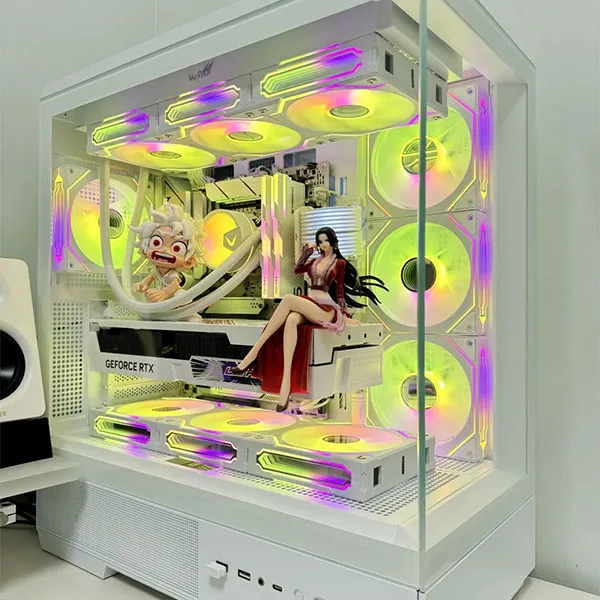
8. Modular vs. Non-Modular vs. Semi-Modular PSUs: Cabling Considerations
PSUs come in three main cabling configurations:
- Non-Modular: All cables are permanently attached to the PSU. This can make cable management more challenging, as you’ll have to deal with unused cables.
- Semi-Modular: Some cables (usually the essential ones like the 24-pin ATX and 8-pin CPU) are permanently attached, while others are detachable. This offers a good balance between convenience and cable management. A semi-modular PSU is a good option.
- Modular: All cables are detachable, allowing you to use only the cables you need. This provides the best cable management and airflow. If the PSU is modular, it’s very convenient.
If you’re using a modular or semi-modular PSU, only connect the cables required for your components. This will minimize clutter and improve airflow inside the case.
9. Cable Management Tips for a Clean and Efficient Build
Good cable management is essential for:
- Improved Airflow: Uncluttered cables allow for better airflow through the PC case, keeping components cooler.
- Aesthetics: A clean build looks much better, especially if you have a PC case with a window.
- Easier Maintenance: Well-managed cables make it easier to access and work on components in the future.
Here are some cable management tips:
- Route Cables Behind the Motherboard Tray: Most PC cases have a space behind the motherboard tray for routing cables. Use this space to hide as many cables as possible.
- Use Zip Ties or Velcro Straps: Bundle cables together and secure them to the PC case using zip ties or Velcro straps.
- Utilize Cable Management Holes: Many PC cases have holes or cutouts specifically designed for cable routing. Use these to your advantage.
- Plan Ahead: Take some time to plan the routing.
Taking the time to manage your cables properly will result in a cleaner, cooler, and more aesthetically pleasing PC build.
10. Testing Your New PSU Installation
Before closing up your PC case, it’s crucial to test your new PSU installation:
- Reconnect the Power Cable: Plug the main power cable into the PSU and the wall outlet.
- Turn on the Power Switch: Flip the power switch on the back of the PSU to the “on” position.
- Press the Power Button: Press the power button on the front of your PC case.
- Observe: If everything is connected correctly, your PC should power on, and you should see the system boot up.
- Check for Stability: Once the operating system has loaded, run some demanding applications or games to ensure the system is stable under load.
- Check voltages in BIOS.
If the PC doesn’t power on or if you encounter any issues, double-check all the connections and ensure everything is properly seated.
Frequently Asked Questions
What happens if I install a PSU with insufficient wattage?
The PC may experience instability. Your system may experience random shutdowns, freezes, crashes, or it may not even power on at all.
Can I reuse the cables from my old PSU with my new PSU?
Generally, it’s not recommended to reuse cables from the PSU, unless the PSUs are from the same manufacturer and are explicitly stated to be compatible. Use the new cables. You should use the new cables that come with the PSU.
How do I know which way to orient the PSU fan?
If your PC case has a vent at the bottom, orient the PSU with the fan facing down (drawing in cool air from outside). If there’s no bottom vent, orient the fan upwards (drawing air from inside the case). Have the fan facing downwards.
What is the difference between modular, semi-modular, and non-modular PSUs?
These terms refer to the PSU’s cabling. Modular PSUs have all detachable cables, semi-modular PSUs have some detachable cables, and non-modular PSUs have all cables permanently attached.
How often should I replace my PSU?
A high-quality PSU can last 5-10 years or even longer. However, if you’re experiencing power-related issues or upgrading to significantly more power-hungry components, it’s a good idea to replace it.
What do I do with the extra cables?
Store them somewhere safe.
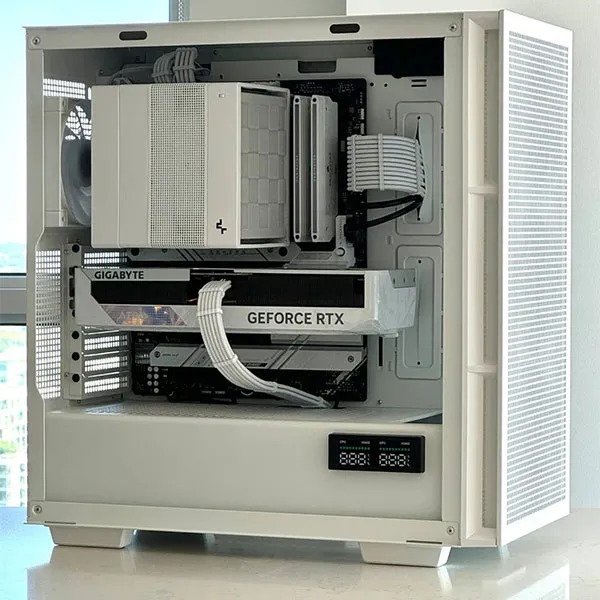
Summary
- Installing a PSU is a crucial step in building or upgrading a PC.
- Choose the right PSU based on wattage, form factor, efficiency rating, modularity, and connectors.
- Prepare your PC case by opening it and removing the old PSU (if applicable).
- Mount the PSU securely in the PC case.
- Connect the PSU cables to the motherboard, GPU, storage devices, and other components. You need to connect the PSU cables.
- Use a modular or semi-modular PSU for better cable management.
- Practice good cable management for improved airflow and aesthetics.
- Test your new PSU installation before closing up your PC case.
- Installing a PSU is a manageable task with careful planning and execution.
- These are the steps you need to take to install a PSU.
- This is a crucial step for building a computer.
- You may need to replace the power supply at some point.
- Our guide to installing a PSU is simple to follow.
- Our PSUs provide consistent PC power.

